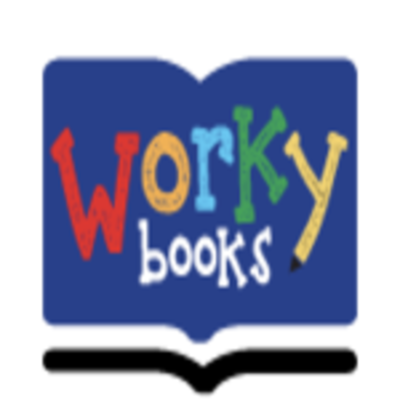The Life of a Star: A Simple Space Journey for Kids
 Workybooks
WorkybooksStars are not just twinkling lights in the night sky—they go through an amazing journey from beginning to end. Teaching kids about the life cycle of a star can be both fun and educational. This blog explains each step in simple words, perfect for young learners, teachers, and parents.
What is a Star?
Stars are huge balls of hot gas. They shine because of the energy created inside them. Every star is made mostly of hydrogen and helium. These gases are pulled together by gravity and heat up to form bright, glowing stars. You can read more about stars and galaxies in the reading passage called Twinkling Stars and Galaxies, which helps young readers explore space in a fun way.
Step 1: Birth of a Star
A star begins its life in a giant cloud of gas and dust called a nebula. This cloud floats in space. Slowly, gravity pulls the dust and gas together to form a thick ball. As this ball grows, it becomes hotter and hotter. When the heat becomes strong enough, a baby star called a protostar is formed.
Step 2: Main Sequence Stage
Once the star becomes stable, it enters the longest stage of its life, called the main sequence. This is when the star shines brightly by burning hydrogen into helium in its center. Our very own sun is in this stage. To learn more about the sun and how it helps Earth, check out the passage the sun our special star.
Step 3: Becoming a Red Giant or Supergiant
After millions or billions of years, the star begins to run out of fuel. When this happens, it starts to change. A medium-sized star like the sun becomes a red giant. A much bigger star turns into a supergiant. In both cases, the star becomes larger and cooler on the outside, but the core becomes hotter.
Step 4: The End of a Star’s Life
How a star ends depends on how big it is. A small or medium star like our sun will shed its outer layers and become a white dwarf. A white dwarf is a small, hot star that slowly cools down over time. A big star may explode in a supernova, a huge blast that spreads its elements into space. After a supernova, the core may turn into a neutron star or even a black hole, depending on its size. These are amazing endings to a long life.
Learning About Stars with Numbers
Space is full of numbers—how far stars are, how big they are, and how long they live. Young learners can start understanding space by using fun math worksheets like Counting to the stars. This helps them practice counting while learning about space.
Blended Learning for Space Topics
Using blended learning, which combines digital tools and classroom lessons, helps make learning more fun. Parents and teachers can mix reading, videos, drawing, and hands-on activities to explain the life cycle of a star. This makes learning smoother and more exciting for children.
Star Math That Kids Love
Math gets more interesting when it’s related to space. A great example is Adding with Stars, a worksheet that lets students practice addition while looking at fun star pictures. This makes math practice feel like playtime.
Coloring Stars with Imagination
Coloring is a great way to help children remember what they learn. With pages like Jo and Selena Flying with Star, students can have fun while thinking about space. It also helps them use their creativity and build interest in science.
Why Learning About Stars Matters?
Learning about the life cycle of stars helps children understand big science ideas like time, space, and how nature works. It also shows how stars give us light and energy, and how they help form planets and other things in space. When children learn these steps in a fun and simple way, they are more likely to stay curious and ask more questions.
Conclusion:
Stars go through many changes in their lives—from clouds of dust to glowing giants, and finally to small white dwarfs or powerful black holes. Teaching children about this process helps them understand both science and storytelling. With tools like reading passages, math worksheets, and coloring pages, learning becomes enjoyable for all types of learners. You can find more space-themed lessons at Workybooks and try out our digital worksheets for practice to keep the learning going both at home and in the classroom.
Subscribe to my newsletter
Read articles from Workybooks directly inside your inbox. Subscribe to the newsletter, and don't miss out.
Written by
